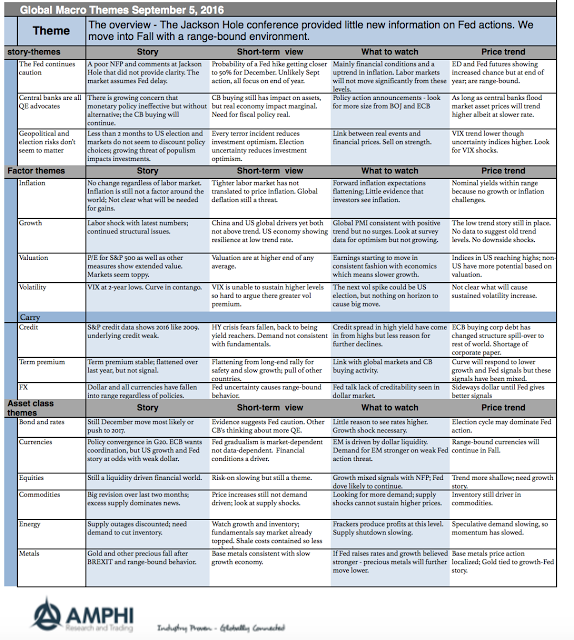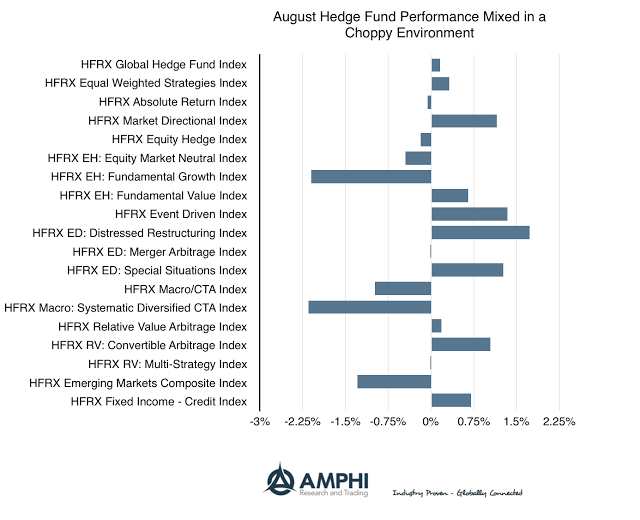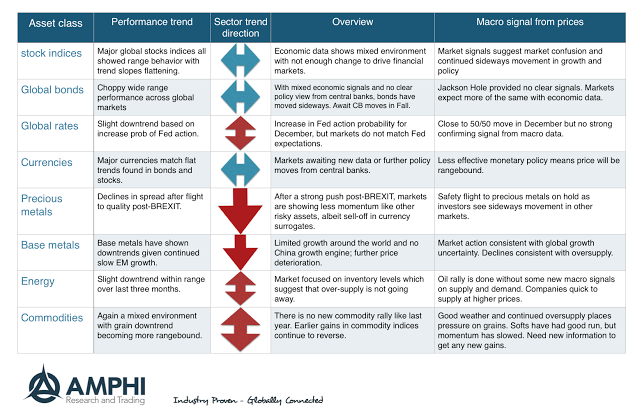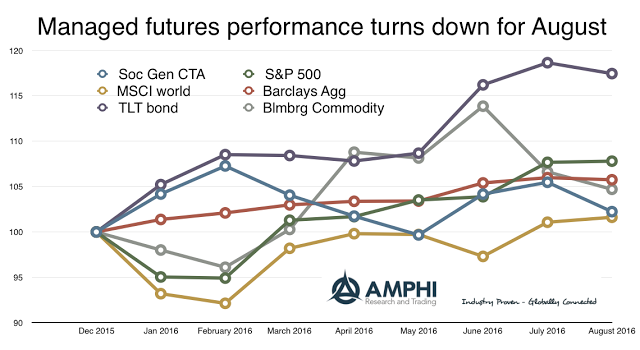Archives
Less Noise, More Insight: How Smart Investors Stay Ahead
As an analyst, reading all the news that is fit to print is not a good value proposition. It just takes up too much time and leads to the confusion of work with effort. Problem with News Consumption Too often news articles just try and fit the facts with current market behavior. If employment figures […]

Policy Coordination – The New New Thing for Central Banks?
Reading some of the recent comments by central banks there seem to be three emerging themes over the last few months.

International Monetary System Not Working on Four Dimensions
Eichengreen is one of the leading international monetary economists and historians. He has always been especially effective at describing and analyzing the global monetary framework across time. When I look at the international monetary system on these four dimensions, I find that we lacking coherence or policies that will affectively raising global growth. Consequently, the longer-term story of secular stagnation or just a lower global growth path will continue to hold. Changes in these dimensions will be necessary to change the slow growth story. Our current views are not positive:
Gemini Alt & IASG Alternatives Announce Technology Integration
CHICAGO, Sept. 13, 2016 /PRNewswire/ — The Gemini Companies announces that its affiliate, Gemini Alternative Funds, LLC (http://www.geminialt.com), has completed a software integration with IASG Alternatives LLC. As part of a strategic relationship, prospective Gemini Alt investors will have access to the IASG Alternatives managed futures database without leaving Gemini Alt’s Galaxy Plus managed account […]

Global Macro Investing – A Simple Framework
What separates global macro investing from other hedge fund styles? This style is significantly different from others because it has a broad focus on a wide range of asset classes. It is not just equity or fixed income focused. Its search for opportunities goes beyond any single country.

Managed Futures and Volatility – The Type of Vol Matters
Managed futures strategies can be described in a number of different ways. Many researchers and market practitioners have referred to it as a long volatility strategy. This language has captured many as a good shorthand description. In the same vein but much more clearly developed, it has been called being long a straddle. A straddle is volatility sensitivity with its gains occurring only after prices move outside the strikes plus premium. Empirical research has shown that the long straddle is a good representation.
Was August the Calm Before the Storm?
Historically the summer markets coincide with tight ranges and low volume. Trends seem to dry up, markets trade in tight ranges, and short-term opportunities can be rare. For instance, the past 30-day range in the SP 500 has been the tightest range since 1995. That particular market led to a 180% rally in the stock market over the […]
The Summer Ups and Downs of Managed Futures
The summer was a positive performance period for managed futures, yet it was still filled with return up and downs. We have identified periods of more than 2% gains and losses on the AMPHI Liquid Alt Index, an equal weighted index of the largest liquid alternative programs available. This return pattern is representative of many periods in managed futures performance with equal gains and loses punctuated by larger gains when there is a market divergence or dislocation. In this case, the main driver was the post-BREXIT market reaction that lasted for approximately two weeks.

Global Macro on One Page for September
The major themes for September have not changed significantly from last month. The reason is simple. The markets have not moved much and the economic information that we have received in the last month has not changed expectations. The two big events were the Jackson Hole conference which provided little new light on Fed behavior and the confirm payroll last week which rolled back some of the real economic enthusiasm.

Hedge Funds Performance Shows Dispersion in August and for the Year
2016 is a year is turning out to be special for relative value hedge funds focused on distressed and event driven strategies. These two along with special situations, equity market direction, and convertible arbitrage moved to be the August winner. The losers for the month were fundamental growth and systematic CTA’s. Both these strategies need movement in economic or firm-specific fundamentals which just did not occur for the month. Relative to the flat equity and fixed income markets, August performance for hedge funds was at best fair.

Lack of Trends Across Major Asset Sectors
The reason for the lackluster performance of managed futures is clear from a review of trends for the major sectors. For stock indices, global bonds, and currencies, the big three asset classes, there were no clear trends for the month. Global rates, energy, and commodities also showed sideways movement albeit with a slight downward tilt. The only sectors that showed any real direction were precious and base metals that moved lower.
CTAs Stung by Low Volatility in August
Following a flat July, CTAs struggled in August. A concomitance of low volatility, range bound markets, lack of follow through on existing trends, as well as an emergence of new trends, resulted in negative performance for several managers. The extremely low volatility environment was challenging for most systematic managers as their strategies had little to work with. This absence of any meaningful follow through resulted in a portion of previously accrued gains being absorbed back into the markets.

Managed Futures August Performance – Negative Chop
A rule of thumb for managed futures performance is that if there is little movement in the underlying asset classes, there will be negative performance for the average managed futures manager. While it does not apply to all managers, certainly trend-followers need trends, and a measure of trend is the longer-term volatility or spread in prices.